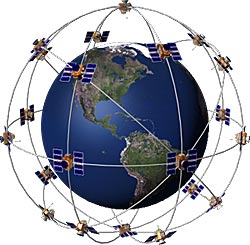The goal is to assess in near real-time and to forecast the influence of Space Weather and ionospheric conditions on the precision of GPS applications.
People try to determine their position already since millennia. In historic times, the stars were used as guides. Now we have another tool, namely GPS: Global Positioning System. Both systems have one common fact: both are space-borne in the sense that stars live there and GPS has man-made stars: satellites flying around over there.

The idea of GPS is really simple. By measuring the transit time of a radio signal transmitted by a satellite of which the position is known, you can determine the distance between you and the satellite. Doing so for at least 4 times with different satellites, one can measure one's position on Earth.
Very nice, but what has this to do with the Sun, more particularly with the SIDC?
The key to this is the IONOSPHERE. The radio signal passes this layer which is formed by incident ultraviolet radiation of solar origin, which photo-ionizes the atmospheric constituents. A sphere filled with ions is formed! This layer is not homogeneous in structure and in time. Solar and geomagnetic activity affect the character of the ionosphere and, consequently, the proper function of navigation systems. Let go a solar storm, a geomagnetic storm, and you will find yourself on a place which you did not expect!
A second key is the satellite itself. Since it is located in space, energetic particles ejected by the Sun can attack it, literally.
Find out more at http://gnss.be/





